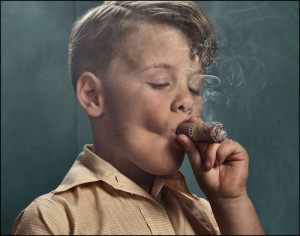In my dream I am younger.
Maybe I am about college age or just a tiny bit older. Early to mid-twenties. I wasn’t aware of being “single” per se, but later in the dream it becomes apparent that I am not yet married. There are many parts of this dream that have a hook in the real world. Of course there are. For example, I did just buy the book I mentioned to the girl in the store. I am reading the James P. Carse book. I did know a man who shared a can of peas with me once. There are other hooks, and some of you who read this may recognize some of them. Because here is what I believe about dreams. They are just stories or narratives (often fanciful, sometimes fantastic) made up by our brains to help us make sense of “the real world”. Whatever THAT is.
This is a long piece. Comes in at over 6100 words. No apologies.
When I awoke this morning, even I was surprised at the depth and detail with which I remember this very vivid dream. I say “even I”, because I’m used to having dreams that are long and detailed. And I’m used to often remembering dreams vividly. But this one was unusual in its power and detail, even for me. I’ve obviously fleshed out the dialogue a lot in the retelling, but the events of the dream as told here really are just as I remembered them upon waking.

I was in a bookstore browsing. I noticed that the front of the store was not dedicated to books, but rather to snacks and drinks … with rows of chips and candy and beef jerky and such, with coolers lining the walls, with beverages of all kinds. A typical convenience store setup. But the BACK of the store, where I was, was entirely comprised of a traditional bookstore.
While browsing, I noticed a girl about my age, over in the SciFi section. She has reddish brown hair, the remnants of childhood freckles, and wire-frame glasses. She had a backpack slung over her shoulder with buttons and pins on it. I don’t know what the buttons all said, but the overall vibe was “hippie chick”, and the vibe worked very well.
 She was gorgeous, and I was smitten without even having heard her voice.
She was gorgeous, and I was smitten without even having heard her voice.
I see she’s picked up a copy of “Nine Princes in Amber” by Roger Zelazny. My heart almost skipped a beat. I loved this book, so I just knew I had to say something to her.
“Have you read that?”
She looked at me with sort of a bemused expression. “Um… no, of course not. Why would I be browsing it if I’d already read it?”
“I’m sorry … Of course. It’s just that, I really, really loved that book and the whole series that it’s part of.” I explained. “In fact, I just bought a hard-copy edition that contains all FIVE books in the first ‘Chronicles of Amber’ series. There’s a second series of five books about the ‘Courts of Chaos’ that appends on and extends the story. The first series is terrific. The second series is more of an acquired taste.”
“I see.” She’s standing facing me now. A little closer than you might expect a complete stranger to stand. But the slight invasion of my space felt good and warm and welcome.
“So, what’s this first one about … if you can tell me without any spoilers.”
“Imagine a cross between the Highlander character Connor MacLeod and a Raymond Chandler detective. In search of his own lost memories, and seeking for order and meaning in the world. That’s the main character, Corwin. The ‘Nine Princes’ are he and his brothers. They’ve got some sisters too that are a very interesting bunch. It’s all a very Machiavellian tale about the land created and ruled by their father, and their struggles to inhabit and understand it. And it’s about the nature of the struggle of Good vs. Evil itself.”
She’s quiet for a moment. I can see that she has the most amazing eyes. Then she said, “Well Ok. Wow. Now I’m interested.”
I confess, I wasn’t sure if she meant she was interested in the book or in me. I liked the idea that it might be the latter. I hoped it was the latter.
She thanked me, headed for the register, book in hand.
Part of me want to follow her. Instead, I just I walked out of the bookstore.
At this point there’s a jump in the dream …..
It seems I’ve gone to a disability conference in a big city. Maybe Chicago. Maybe Detroit, I’m not sure. There is a very large “campus” type setting where the conference is occurring. I have a very, very long walk from my hotel to the buildings where the conference sessions are located. I’m volunteering, and have been assigned to a location in the very back of the campus complex. There are slippery paths beside streams, steep hills to walk over, and paved-paths twisting through dense and dark wooded areas. I was making this trek one afternoon, and was quite winded. I ran into a group of friends from Middle Tennessee who were also at the conference, and I remarked about the distance and difficult walk.
One of my friends says, “Well, I’ve been told you can cut through the area in front of the auto plant, then cut through the auto plant itself, and shave some considerable distance off the total walk. But none of us have been willing to try it.”
Yes, there’s a huge auto plant in the middle of the campus. I have no idea why. Hey, it’s a dream. I tell my friends that I’ll probably give that route a try tomorrow.
Next day, I’m still at the conference, but I’m walking in a very dirty city downtown, with noisy elevated trains, a lot of diesel exhaust from trucks and buses, and too much grime. It was cold and rainy. There are lots of homeless people and guys with jackets over hoodies, standing around burning barrels warming their hands. Everywhere around, there are sketchy looking businesses. I have no idea what most of them are selling.
Then, I spy one business … a very, very NARROW store front. Not much wider than the front door and a little display window. The sign on the outside says, “Stetson Hats. Largest selection anywhere.” So I walk in and the walls on both sides are COVERED with a variety of Stetson hats. I can just about reach out and touch EACH wall at the same time. Like I said, it is NARROW. Most of the hats are traditional “cowboy” variety. But there are a few that aren’t.
An old man with a nice sharp suit vest over a dress white shirt, and with one of those tailor’s tape measures draped around his neck steps from behind a curtain in the back of the store. “Can I help you young man?”
Something about him reminds me of Mr. Olivander from the first Harry Potter novel.
“I’m looking for an Open Road Royal Deluxe, in Fawn, size 7-1/4”
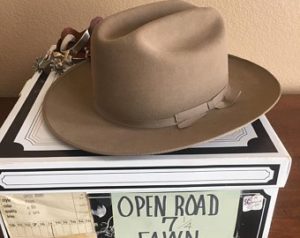 He sort of sizes me up. “You sure that’s the size you need?”
He sort of sizes me up. “You sure that’s the size you need?”
I say, “Pretty sure.”
He asks if he can take a measurement just to be sure.
“Absolutely, go ahead”.
He steps in close, apologizes for the intrusion, and wraps the tape around my head. “Hmmmm. Yes. Between 7-1/8, and 7-1/4. We’ll try 7-1/4 and see how that works.”
“Ok”
“You know, I sell a lot more of those in Silverbelly than Fawn.”
“I want Fawn”
“Some guys like them Chocolate.”
“I want Fawn”
“Well then, Fawn it is. Let me see if we can fix you up.”
He rolls over a ladder with wheels on the bottom, and whose top is attached to a rail. For the first time, I look up and I am absolutely astounded to see that the store just goes up and up and up, with literally THOUSANDS of hats on both walls. I can’t see to the topmost part of the store.
The old gentleman starts to climb. He climbs and climbs, for what seems a long while. He’s up there maybe forty or fifty feet in the air, when he calls down to me ….
“I’ve got a 7/14 in Silverbelly!! And I‘ve got one in Caribou! Shall I bring those down?”
I reply, “No. I want Fawn.”
He says, “Ok.” Then a second later, “Hey, I’ve got something here that might work.”
He comes down with a hat box. It’s an Open Road XXXXXX in 7- 1/4. And it’s in Fawn.
He says, “I don’t have the Royal Deluxe. Only the 6X in Fawn. That is, in your size.”
I try it on and look in the mirror. It’s a perfect fit, and looks damn good. But it’s too stiff. The 6X is a dress hat, and stiffer than the casual Royal Deluxe.
“It’s too stiff” I say.
“I was afraid you’d say that. Can you come back tomorrow? I can have you one by tomorrow.”
“Sure. I’ll come back then.” I give him my name and phone number. ”Call me if there’s a problem getting it.”
“There won’t be” he assures me.
I walk out and hear the little bell over the door ring.
(Aside: It may seem weird that this episode is in the dream, because it doesn’t figure in the story-line again at all. But on the other hand, I’ve been thinking about buying a new hat. And, that’s sort of how dreams work, right? Random bits not always easily strung together, with some weird connection to the waking hours. It’s also another reason why I wondered if this was actually a series of shorter dreams.)
Across the street and under the elevated commuter train tracks I walk down through a swale and up the other side to a line of men in dirty work uniforms. They’re waiting to clock in at the auto plant. There’s a giant “Chevrolet” logo over the plant entrance.
When I get to the front of the line, I take a blank time-card from the rack, write my name across the top, and punch it into the time clock where it gets a stamp with the current time, and then I put it back in an empty slot.
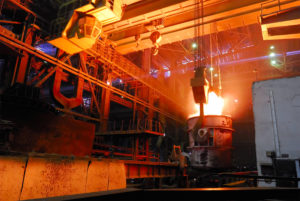
steel works, crane with stove busket
Inside the auto plant, I start walking down cramped aisles between machines that are running and very noisy. Some of them have molten metal flowing in them, and there are occasional sparks flying out into the aisles as I walk through. Sometimes the sparks land on me, then skitter down on to the floor before self-extinguishing as they cool. I’m thinking … good thing I’m not wearing a new hat!
With one twist and turn of the aisles after another, soon I’m totally lost. I’m just trying to make my way towards the back of the plant by dead reckoning based on where I *think* I came in.
I realized I needed to pee. I mean, I really REALLY needed to pee.
I hollered out to a guy wearing a hard-hat who was running a nearby machine. “Where’s the bathroom???”
He points up some stairs to a mezzanine and I see the door labeled “MEN” just down from another one labeled “WOMEN”.
The guy with the hard hat says, “Just make sure you come back OUT of the same door you went IN”
“Yep!”, I chuckled because I thought he was making some joke I did not completely understand.
I went up the steps, and right by the door I see a little black dispenser with a knob on top and a slot on the bottom. It’s labeled, “Salt Tablets”.
So I put my hand under the slot, and give the knob a twist. Just one, tiny twist. About forty salt tablets come tumbling out and fill my hand to overflowing.
Just then, a woman in a hard hat comes out of the Women’s room and sees me. “HEY!!! Don’t waste those!!! We have to take one every hour while we’re on the job! You use them all up, we all get sent home!”
“I’m sorry. I just wanted one. I don’t know why they all came out.”
So I took one, bent over the water fountain to get a swallow, and put the other bunch in my pocket as the woman walked away shaking her head.
I went in the door marked MEN, and did my business. As I was washing my hands, I noticed that just as there was a door on one end of the room that I had entered by, there was a door on the other end as well. The man’s words came back to me…. “Just make sure you come back OUT of the same door you went IN”
I didn’t hesitate at all. I went out the OTHER door.
Now, rather than being on the plant floor, I was in a much nicer section of the facility with offices, carpeted floors, a large room of cubicles, etc.
As I walked down a hallway, I saw a room labeled “Break Room”.
I went in and got myself a soft-drink out of a vending machine. I sat down at a table. The only other person in the room was a very large man in a shirt and tie, seated at an adjacent table. He turned to look at me.
“Hello son, I don’t think we’ve met, have we?”
“No sir.”
This guy was very reminiscent of the Sydney Greenstreet character in Casablanca, but without the Fez and white suit.
“Have you had any lunch?”
“No sir, I haven’t” I replied.
“Then join me.” He motioned me to come over to his table.
 “Do you like peas?” he asked.
“Do you like peas?” he asked.
I thought that was an odd question, but I answered, “Sure. I like most all vegetables.”
He threw back his head and laughed a big hearty laugh. “Good! Good!!! Good for you!”
He got up and walked over to the counter where there was a row of microwave ovens lined up. I see that one of them has just finished its cycle and the bell was indicating that it was done. He reached in and pulled out a bowl in which he had heated up a can of peas. He got two Styrofoam bowls and emptied half the peas into each one. He put a dollop of butter on top of each mound of peas and grabbed a couple of plastic forks and brought them over to our table.
“Eat up” he said. So I did.
“Tell me, son, which department do you work in?”
I hesitated a second, thinking for the first time about the fact that I was an interloper here. I didn’t work at the auto plant, and had no real business being there. I decided to come clean.
“Well, sir … I don’t work here at all. I was just trying to find a short-cut through the plant to get to the conference center on the other side. I’m here for a disability conference, and I’m supposed to be working as a volunteer back there in a little while.”
He looked at me. “I see. You know, that was a pretty bold move, just deciding to walk through a plant like this. Most people would be too scared to try a stunt like that. Kind of dangerous too.”
I said, “Yeah, probably so. But I’ve been around industrial plants my whole life. They don’t scare me. I’m an engineer. I work with machines like these all the time. I’ve been in plants since I was a little boy, going with my daddy to the plant where he worked.”
The gentleman looked at me again, but seemed a bit more now as if he were sizing me up. “Tell me about your daddy and that plant you went to as a little boy.”
I told him about my hometown of Mexico, and the A.P.Green refractories plant. At the mention of A.P. Green, he threw back is head and roared with laughter again. “No kidding!!! I KNEW old Allen Green! He was a good man. So your father worked for him?”
“For the company, yes. His whole working life. Dad always said that Mr. Green was the kind of man who really cared a lot about his employees, and about trying to make the company into the best possible place to work that it could be.”
Then, he said “That’s a great way to run a business, son. I try to do that here too. I’m the President of this car company. Your business is only as good as your unhappiest employee. Remember that when you’re in a position of leadership.”
“Thanks. I will.”
“So tell me about your dad. And about his taking you into the plant.”
I told him that story, and he asked a lot of questions.
Then completely out of the blue, he changed the subject. “Tell me about something that you’ve been doing or thinking about lately that just lights you up inside?”
I loved this question. I told him so.
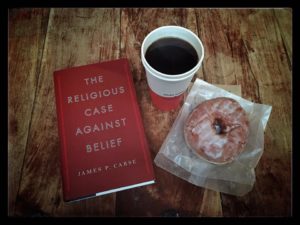 “Well, sir, I’ve been reading this book by James P. Carse called ‘The Religious Case Against Belief’. I know that title sounds odd, but Carse makes an interesting case that “beliefs” can all too easily get in the way of the practice of true religion. “Beliefs” can get in the way of embracing all that is important and wondrous, and all that causes us to seek for answers to big questions. He says that “beliefs” can easily turn into dogma, and we erroneously are tempted to use that dogma to create artificial boundaries between ourselves and all that we may perceive as “the other” … because THEIR beliefs are different than OURS. A more important thing to consider is exactly WHAT is it that our professed beliefs motivate us to do? How do we choose to BE in the world, as a result of what we profess to believe? A belief system is NOT a religion. And a religion is far merely a set of beliefs.”
“Well, sir, I’ve been reading this book by James P. Carse called ‘The Religious Case Against Belief’. I know that title sounds odd, but Carse makes an interesting case that “beliefs” can all too easily get in the way of the practice of true religion. “Beliefs” can get in the way of embracing all that is important and wondrous, and all that causes us to seek for answers to big questions. He says that “beliefs” can easily turn into dogma, and we erroneously are tempted to use that dogma to create artificial boundaries between ourselves and all that we may perceive as “the other” … because THEIR beliefs are different than OURS. A more important thing to consider is exactly WHAT is it that our professed beliefs motivate us to do? How do we choose to BE in the world, as a result of what we profess to believe? A belief system is NOT a religion. And a religion is far merely a set of beliefs.”
“Fascinating. Go on.”
“Well, one of the most interesting ideas so far to me is that he talks about the fact that there are three different ways of being ignorant.”
He chuckled at that. “I’d say I’ve seen a lot more ways than that just in this plant alone! Sorry … go on.”
I continued …
“There is what he calls ‘Ordinary ignorance’. That stuff which can be known, but we just don’t know it yet. I don’t know your phone number. I don’t know what I’m going to eat for lunch tomorrow. I don’t know how many cars your plant makes each week. I don’t know what color underwear you’re wearing. I don’t know who will win the Super-Bowl.
Then there is ‘Willful Ignorance’. That’s what you often see in politics these days, or in religious conflicts. Those who hold to a set of “beliefs” find their identity in falsely erected boundaries and by fostering aggression between those who believe as they do, and the other. This is why belief systems choose, often with disastrous consequences, to remain locked in bloody conflict. When by engaging in dialogue, they could likely recognize the great deal they have in common. They *could* choose to dispel that ignorance with knowledge … but don’t.”
“That is really good stuff, son. Go on. What’s the third way of being ignorant?”
“The third ignorance is what he calls ‘Higher Ignorance’. And it stands in contrast to the other two. It’s the realization that there are things that are simply unknowable, and a recognition that the path to this ‘Higher Ignorance’ leads to endless ways to enrich and enhance the way we choose to be in the world. The path to Higher Ignorance is the path that is walked by most of the mystics or the prophets that many choose to follow. It’s the path chosen by great thinkers such as Aristotle, Plato, Newton, Galileo, and others. Wasn’t it was Socrates that said “The only thing I know for certain is that I know nothing?”
“Son, you don’t talk like any other engineer I’ve ever met.”
“I’ll take that as high praise, sir.”
He laughed again. He had a great laugh. Then he asked, “What are you doing late tomorrow afternoon?” I said that I had to be at the conference early but by late afternoon I could be free.
“I’m hosting a big picnic tomorrow for the plant after first shift, and I would love it if you could come. There’s somebody I want you to meet.”
With that, I finished my peas, thanked him, and left.
Next day, after my shift a the conference, I showed up at the picnic. Immediately I saw that I was under-dressed. I was dressed in picnic clothes. I was wearing a nice pair of shorts and a clean Hawaiian shirt. But all the men I could see around had on old-timey suits, like from the 1910’s. And the women all had on long dresses with long sleeves. Many had on floppy hats. Some of them were holding parasols. Given my attire, and my age difference, I didn’t really feel like I fit in.
Then I did notice that there were some other folks about my age playing croquet nearby … But also dressed up fancier than you would expect for a peaceful afternoon in the park.
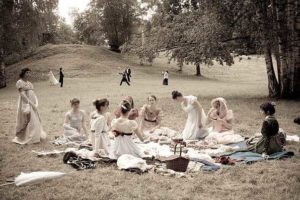 I spied the heavy gentleman I had spoken to the day before, and he beckoned me come over to where he had a large blanket spread out on the ground. There were a few people seated with him. For some reason, they had chosen to spread their blanket in a place where there were a lot of tall weeds around, instead of on one of the more closely cropped and manicured bits of lawn where most of the other attendees had their own blankets.
I spied the heavy gentleman I had spoken to the day before, and he beckoned me come over to where he had a large blanket spread out on the ground. There were a few people seated with him. For some reason, they had chosen to spread their blanket in a place where there were a lot of tall weeds around, instead of on one of the more closely cropped and manicured bits of lawn where most of the other attendees had their own blankets.
He said, “I’d like you to meet my wife. Honey, this is the young man I spoke to you about.”
She was beautiful. Reddish brown hair, and the most amazing eyes. “A pleasure” she said, as she reached out her hand and I took it and introduced myself. “You made quite an impression on him yesterday” she offered, in sort of a quiet aside to me.
Then he asked, “Would you like something to drink? Let me go get you something.”
I said, “That’s alright, don’t get up. I can go get it for myself. Can I bring any of you anything?” He indicated that they were fine.
I walked over towards the table where the food and drink were spread out and started to pour myself a glass of freshly-squeezed iced lemonade from a container with a spigot.
At the end of the table, fixing herself a plate with some light finger-foods was a girl in a white sun dress. She had reddish brown hair. It took me just the merest fraction to realize it was the girl from bookstore!! She hadn’t seen me yet.
I walked up closer to where she was and asked, “So how do you like that book?”
She turned and looked at me with those eyes, and it took just a moment for her to place me in context.
“Oh hi! It’s you. What are you doing here?”
“Somebody I met yesterday invited me. So, how’s the book coming?”
“I haven’t started it yet. I’ve got a lot of unread books. But I’ve put it at the top of my ‘Next to read’ pile.
“Cool. I think you’ll like it. I actually don’t read much fiction these days, but that’s one that I liked a lot a when I read it a long time ago.”
“Not much fiction, eh? So what DO you read?”
“Oh, all kinds of stuff. I read business and marketing books, but I read them from a different perspective than that for which they were originally written. And I read essays on all different aspects of what it means to …. “ I laughed to myself about how incredibly nerdy and boring that sounded. “… oh you know… just all kinds of stuff. Whatever catches my eye.”
“Hmmm. Ok.” She laughed little. It wasn’t a big laugh. Barely even a laugh, really. But at the sound, my breath caught in my throat, and I felt warm all over. Like stepping into a warm shower after coming in from being drenched in a cold rain. I wanted to get to know her better. In some way, I really felt like had to have this woman in my life.
I said, “Hey…. There’s a trail over there. Would you want to take a walk around the lake with me or something? We can just talk. I’d like to hear YOUR story.”
She looked at me. “You know what? That sounds terrific. But my daddy said he had somebody he wanted me to meet. If I don’t show up, he’ll probably blow a gasket. Geez. It’s probably going to be another one of his insufferable engineers. Listen, wait here and I’ll go see if I can just meet this guy and make a hasty exit.”
It hit me. The realization. The sudden force of it nearly knocked me down. I was reeling, my mind going like a jet-ski on a glass lake at dusk. “Perchance, is your daddy the president of the car company?”
“Yes….” She had a quizzical look.
“Well, I’m pretty sure I’m the one he wants you to meet. He’s the one who invited me to the picnic.”
She laughed out loud.
“Did you meet him over lunch at the plant yesterday?”
“Peas”, I said.
She was shaking with laughter. “Him and his damn canned veggies. Do you work there??? When he said he’d met a guy at the plant yesterday, I just assumed …. Well, let’s say that he’s tried to introduce me to guys before, but it’s always been pretty much a flaming disaster.”
“Well, first, no… I don’t work there. I’m in town for a disability conference. I was just taking a short-cut through the plant and ….. Well, I got sidetracked into a break room and there he was. I started telling him about this book I was reading about the nature of …..”
She put her hand up with her fingers to my lips and said “Shut up. Just shut up. You can tell me all about it later. For now, let’s go.”
“What about your dad?”
“Well, he wanted me to meet you. Now I’ve met you. And now I want to go for a drive with you and show you something.”
“I don’t have a car here.”
“I’ve got mine. Come on.” Then she took my by the hand and led me to the parking lot.
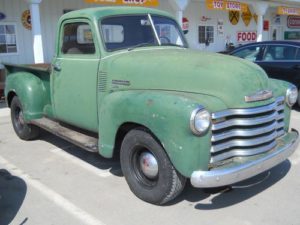 We got in an old 1950’s era Chevy pickup truck, with battered and beaten paint job and more than one deep dent on the fenders. The upholstery on the seats was showing a lot of stuffing through the rips, tears and worn spots. But when she turned the key, it turned over and began to hum like a fine Swiss watch.
We got in an old 1950’s era Chevy pickup truck, with battered and beaten paint job and more than one deep dent on the fenders. The upholstery on the seats was showing a lot of stuffing through the rips, tears and worn spots. But when she turned the key, it turned over and began to hum like a fine Swiss watch.
“We need to make one stop first, then on to ….. well … .on to what I want you to see.” She smiled that smile.
As she pulled out of the parking lot and then across and off of the campus, we were in an old suburban neighborhood, with weathered old houses built into the hill sides. There were no front yards. Basically, all the houses just had steps that came down off the front porch and right to curbside. Soon she pulled up in front of what appeared to be an old drugstore.
“Come inside with me.”
Inside I saw that the floor was wide board wooden floors, worn down smooth from years of the footsteps of neighborhood shoppers getting their salves and ointments and tonics and pills, kids getting their penny candy, old people buying fix-o-dent, teenage boys buying Bay Rum and Club Man and their first razor, and teenage girls buying bottles of Evening in Paris. As we walked up to the counter I could see that there was indeed shelf after shelf of old apothecary jars back there. An old man back there approached the counter with a big smile, but before he could speak she asked, “Is it ready?”
“Yes indeed. Just as I said it would be.”, he reached into a cabinet and handed her a large purple candle. “Be careful with that. Those ingredients aren’t easy to come by.” Then the old man looked at me. He almost looked like he was going to say something, but decided against it.
She asked, “Can I see the book?”
He reached under the counter and produced a large loose-leaf notebook, and opened it up to the last page or two. She took hard look at it, then gave out a little squeal and gave him a great big smile. “This is fantastic!” Then she leaned across the counter and gave him a little peck on the cheek. She said, ”I’m going upstairs to see them for a second.” Then to me, “I’ll be right back. Just wait here.”
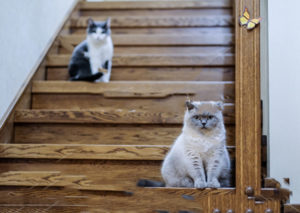 She opened a side door I hadn’t noticed and headed up the stairs that were there behind it. I think I saw just a glimpse of a couple of cats on the steps.
She opened a side door I hadn’t noticed and headed up the stairs that were there behind it. I think I saw just a glimpse of a couple of cats on the steps.
I looked at the notebook pages. They were lined off in little square grids, and in each grid there was a cat’s paw-print. But not just ANY paw print. These had fancy swirls and curved lines of all sorts made by the cat’s claws. I’d call it almost a mystical type of cat claw calligraphy. Judging by the variation in sizes, the paw prints were made by a fairly large number of different cats.
“Her cats” The old man said, offering scant explanation.
I gave him a puzzled look.
“Her daddy won’t let her keep them at the house. Says he’s allergic. Me, I think he’s afraid of them.”
“What are all these lines around the paw prints?”
“Only she knows. She’s teaching them to ‘talk’, after a fashion. She can read these prints just like you or I would read a book. Her daddy thinks she’s crazy.” He closed the book and put it under the counter again.
Then, “Hell. She ain’t crazy. She’s the sanest person I know.” He looked at me. “How well do you know her?”
“We’re old friends.” I lied.
He looked at me, and I knew that he could tell I was lying. “Right.”
Then he went on, “Listen fella. I don’t know you. I don’t know what you’re about. But you treat her like the extra special young lady that she is, ok? If you don’t, I’ll hear about it. ” It wasn’t exactly a threat, but it wasn’t exactly kind advice from a wise old man either.
“Yes sir. For what it’s worth, I’m quite taken with her.”
“Yeah, I know …” Something in the way he said it was unusual. The way it sort of trailed off at the end. Not like a declarative statement, but more like the resigned uttering of a universal truth. An obvious truth that need not be spoken.
I could hear her coming back down the stairs.
The old man looked just a little desperate; like he had more he wanted to say to me. Then leaning across the counter a bit, and whispering quietly just to me, “That candle’s powerful stuff. You’re in no danger. But keep your wits about you!”
I had no idea what he was talking about.
She shut the door to the upstairs behind her, then went behind the counter gave him a little hug and another peck on the cheek and a very warm smile and said, “Thanks”.
Then she led me back out to the truck.
I said ”He seems nice.”
“Yes. Very nice.”
“I saw the all the paw prints in the book. I don’t understand it all, but I think it’s very, very cool what you’re doing.”
She looked at me and I could feel the happiness well up in her that was borne in her realization that I could be trusted with this part of her life. “Please don’t say anything about it to anyone …. especially daddy. I love them so much. My cats I mean. I just love them so much.”
“I won’t. I’ll never mention it.”
“Daddy thinks I’m crazy. I’m not crazy.”
“I know.”
We drove for what must have been an hour or more, and as the city faded behind us, the little road we were on became tree-lined. There was no other traffic. I had slid close to her on the truck’s bench seat. Not so close as to interfere with her driving, but close enough that I could smell her, and when I looked at her in profile, I could see how clear and wet and alive her eyes were.
It was just past dusk when she slowed and turned the truck off of the blacktop road and onto what was barely a path through the trees that lined the road. Had you not known it was there, you would likely have driven right past, without realizing it was a place you could drive a vehicle. The truck’s headlights were the only light as the trees formed a solid canopy over the little path. Less than 50 yards through the trees, and the road took a sudden upward turn over a berm and tree line fell away to reveal an astonishing sight.
On top of the berm what I saw out in front of me was unlike anything I’d ever seen. Stretching out in a gentle curve away from us under the light of a full moon there was a solid black beach, and a wide cove opening out onto an ocean glistening in the moonlight. No clouds.
I think I gasped, and she laughed again. “Isn’t it beautiful?” she asked.
We got out of the truck.
“I’ve never seen a black beach” I said.
“This is the only one just like it in the world. Obsidian and basalt and black granite and onyx. Smashed into powder-fine sand by untold millennia of waves crashing down upon it.”
“But ….” I started.
“Shhhhhhhh” She put those fingers back up to my lips. “Daddy owns this beach. We’re the only ones here. Hardly anybody even knows about it.”
She took me by the hand and led me down onto the sand. I only let go of her hand once as we walked along, to pick up a rock and throw it into the ocean. We talked and talked and talked and I have no idea about what. But I do remember the way it made me feel. It made me feel good.
Before long we got out onto the point at one of the ends of the cove, and the black sand was particularly fine under our feet. “Let’s sit here and just soak it all in, ok?”
I nodded.
 She produced the purple candle out of a shoulder bag I had not noticed she was carrying. She found a place in the black sand somewhat sheltered from the small breezes blowing, and lit the candle. Soon a scent that was unlike anything I’d ever smelled began to fill the night. It wasn’t exactly floral, not exactly herbal, and not exactly woody. But it was all of those and more. My heart was beating so hard that I was surprised she couldn’t hear it. We sat for a long time in silence, just breathing in the night. The ocean. The candle. … Each other.
She produced the purple candle out of a shoulder bag I had not noticed she was carrying. She found a place in the black sand somewhat sheltered from the small breezes blowing, and lit the candle. Soon a scent that was unlike anything I’d ever smelled began to fill the night. It wasn’t exactly floral, not exactly herbal, and not exactly woody. But it was all of those and more. My heart was beating so hard that I was surprised she couldn’t hear it. We sat for a long time in silence, just breathing in the night. The ocean. The candle. … Each other.
I lost track of time.
All I could think about was how much I wanted to kiss her.
But I had the feeling like maybe I shouldn’t. Not yet.
She was the first to break the silence. “Do the stars fill you up as much as they do me?”
“Yeah. Not *just* the stars though. All of it. The stars. The moonlight. The ocean. The black sand. The tiny flame and smell from that beguiling candle.” I paused. “You.”
She laid back on the sand, and the contrast between her white sun dress and her hair and the black sand was magical. I wanted to lay my head on her chest and stare up at the stars for the rest of my life.
She said, “Come lay beside me and tell me what it was that made daddy think I should meet you.”
I lay down and pulled in close, so our faces were just inches apart.
“There’s this book I’m reading about the nature of …”
“Shhhhhhhhhh.” Once again her fingers on my lips. Only this time, when she took her fingers away, she pulled me down so that those few scant inches between us melted away.
That’s when I woke up.
“Those old dreams, they’re only in your head” – Bob Dylan
love,
John



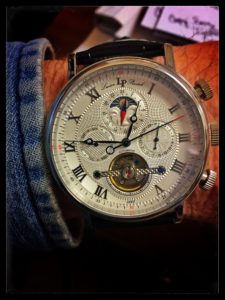
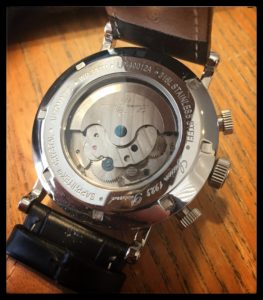
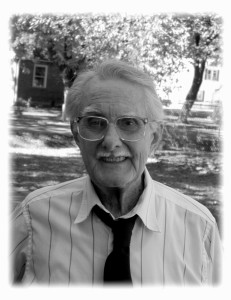









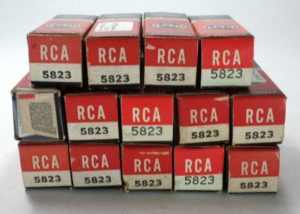
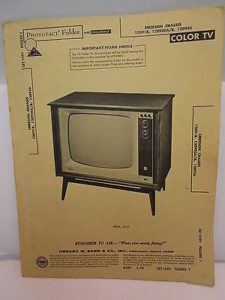
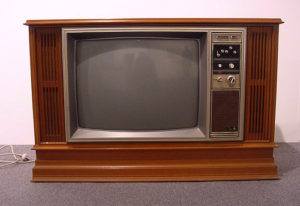
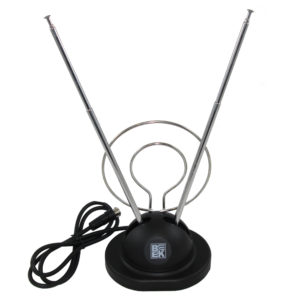
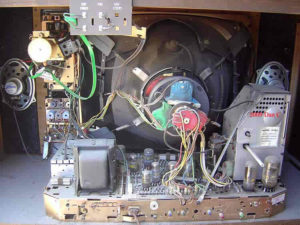
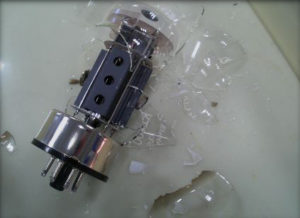
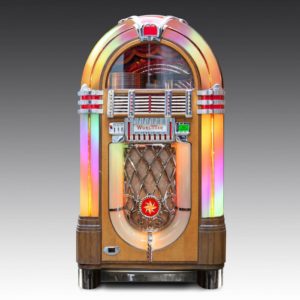
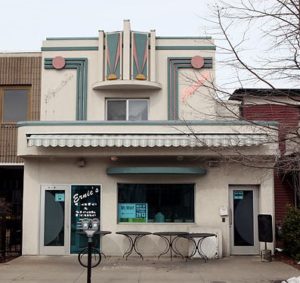
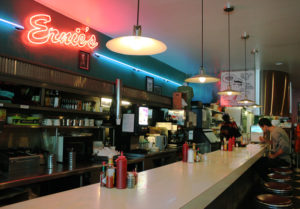

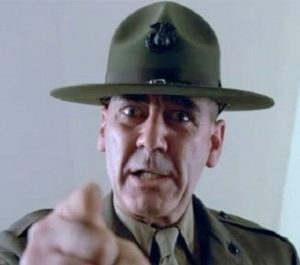
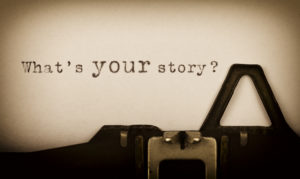
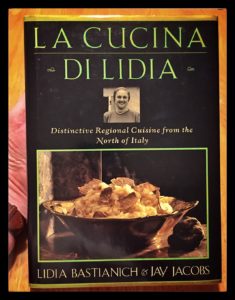

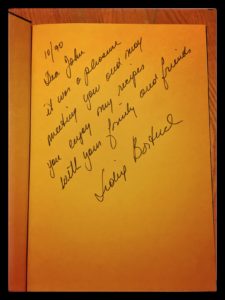
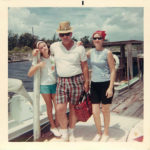
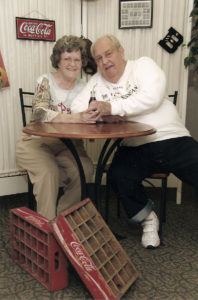
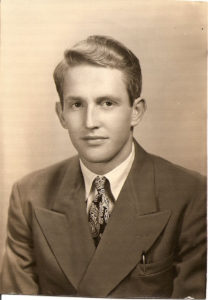

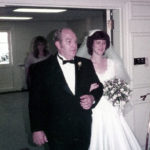
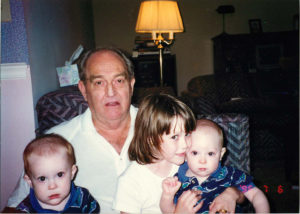
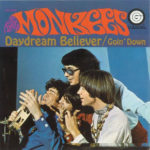 It was the mid-60’s … so my friends and I were starting to get into music. The Beatles, The Dave Clark Five, Herman’s Hermits, the Monkees. Randy didn’t care about any of that. He wasn’t interested in listening to records.
It was the mid-60’s … so my friends and I were starting to get into music. The Beatles, The Dave Clark Five, Herman’s Hermits, the Monkees. Randy didn’t care about any of that. He wasn’t interested in listening to records.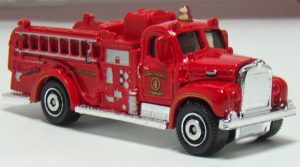 If I got out my Matchbox cars to drive them around on a pretend town on the front porch, Randy would just hold one (usually the firetruck) in his hand and spin the wheels.
If I got out my Matchbox cars to drive them around on a pretend town on the front porch, Randy would just hold one (usually the firetruck) in his hand and spin the wheels.

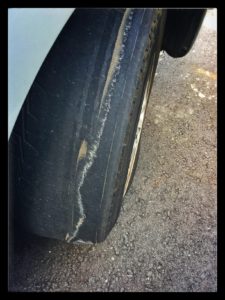
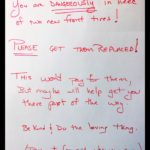
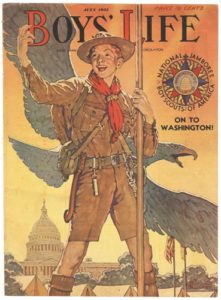
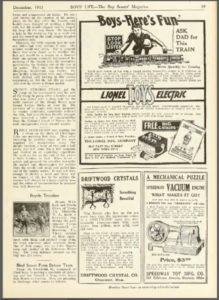
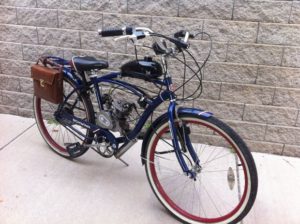


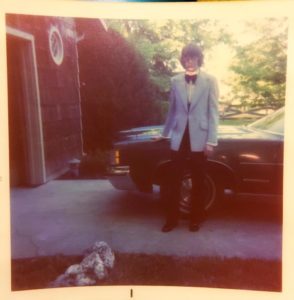
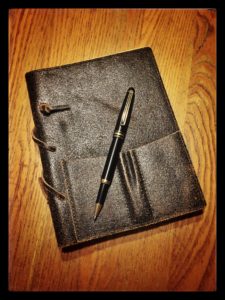
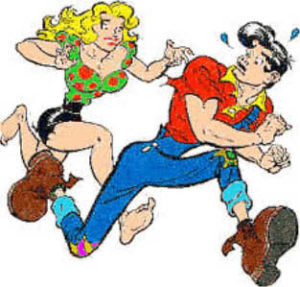
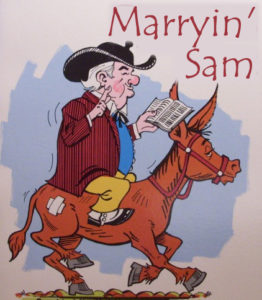 Part of the annual ritual of Sadie Hawkins, was the appearance of “Marryin’ Sam” (also lifted from the comics). An itinerant preacher …. Or possibly Justice of the Peace …. Who could, (for a small donation to charity), assist any of the young couples who just HAD to seize the moment to “get hitched”. Tbe “marriage” was entirely legal and binding ….. for the duration of the dance anyway.
Part of the annual ritual of Sadie Hawkins, was the appearance of “Marryin’ Sam” (also lifted from the comics). An itinerant preacher …. Or possibly Justice of the Peace …. Who could, (for a small donation to charity), assist any of the young couples who just HAD to seize the moment to “get hitched”. Tbe “marriage” was entirely legal and binding ….. for the duration of the dance anyway.